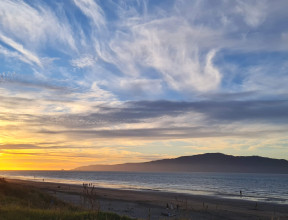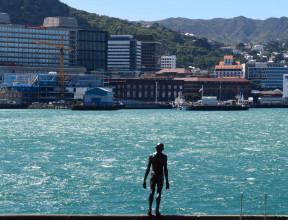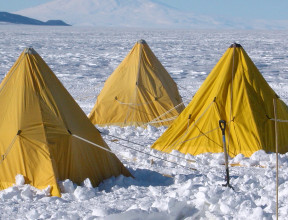
Glaciers
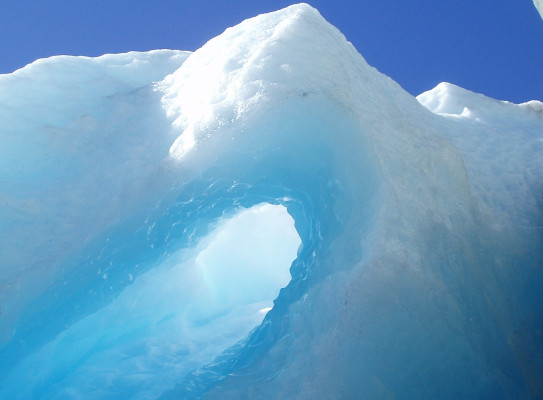
Glaciers are a dramatic part of the Aotearoa New Zealand landscape. What they are made of and how they move provides unique insight into past, present and future climate conditions.
What is a glacier?
A glacier is a large mass of ice that has been created by the compression of snow that has piled up over many years. Usually the ice is slowly moving downhill from the area of snow accumulation. As it descends to a lower altitude temperatures get warmer and warmer and tend to melt it away.
Glaciers are made of ice and snow, but also contain water, air and eroded rocks (scraped from the bedrock or added by rockfalls from adjacent cliffs). These have important effects on some glacier processes such as flow rate, surface melting, ice deformation and landscape erosion.
-
Types of glacier
There are three types of glaciers: mountain glaciers, ice sheets, and glacier tounges.
- Mountain glaciers in temperate regions are subdivided into the small cirque glaciers, the larger, more dynamic alpine glaciers and the biggest valley glaciers.
- Ice sheets occur where ice has built up to such an extent that the landscape features are buried. There is a great range in scale, from ice caps that cover an individual mountain peak to the huge East and West Antarctic Ice Sheets, the Greenland Ice Sheet and the Patagonian Ice Cap. Within an ice sheet, there can be ice streams, where glacier ice is flowing faster, in between more stable areas. Large ice sheets can combine a lot of individual ice streams and other glaciers.
- If a glacier reaches the sea without melting, it can float intact as a glacier tongue. A single body of floating ice that is fed by several glaciers is known as an ice shelf. At the edge of glacier tongues and ice shelves, the ice breaks off and floats away as icebergs.
-
Glacier occurrence
At present, glaciers and ice sheets cover about 10% of the land surface of the earth. They are created in cold climates where the average temperatures are low enough to prevent at least some of the annual snowfall from melting away. Year by year more snow piles up. As you would expect, this means that glaciers occur high up in mountain ranges around the world as well as in the cold polar regions. They even occur in tropical regions such as East Africa and Central America where the mountains are high enough.
New Zealand’s largest glaciers occur in the Southern Alps of the South Island. There are also several smaller glaciers on Mount Ruapehu in the North Island.
-
Mountain glacier features
A glacier is usually fan shaped, with a broad accumulation zone where snow and ice are piling up, flowing into a narrow trunk that ends in the terminus or glacier snout. The lower ablation zone (area dominated by ice loss due to melting and evaporation) is replenished by the downhill flow of ice. The ice from highest up in the accumulation zone gets buried deepest, and therefore travels farthest down the glacier to finally reappear at the terminus.
Accumulation zones usually take up about two thirds of the total surface area of a glacier. As the ice moves slowly towards the narrower glacier trunk the ice depth and velocity increases, eroding a more clearly defined and deeply cut valley. Ablation zones are usually more broken by crevasses and, in summer consist of exposed ice, with surface melt water streams and an increased abundance of exposed rock debris.
Between the accumulation and ablation zones is a line where there is no net addition or reduction of ice by the end of the summer. This is called the equilibrium line, and it occurs at roughly the same altitude in a given mountain area (called the equilibrium line altitude or ELA).
In front of the glacier terminus is an area of rock debris and meltwater streams. If the glacier has retreated relatively recently, exposed bedrock often shows polished and scratched surfaces caused by the rasping effect of the glacier with its embedded rock fragments.
-
Glacier rocks
In the lower part of a glacier, buried rocks gradually come up to gather on the surface as the ice around them melts away. Because of their darker colour, rocks absorb more of the sun’s radiation than the ice and contribute to faster warming and melting. However, if the rocks form a complete layer more than about 10cm thick, then they insulate the ice from the sunlight and slow down the melting process.
Once the ice finally melts, the rocks get dumped around the edges of the glacier to form ridges and piles of moraine or scattered individual boulders called ‘erratics’. These are a vital record of past ice distribution and extent. Renewed ice advances often destroy these moraines however, so they do not tell the complete story of glacier changes. Since the height of the last ice age, about 20 000 years ago, there has been a dramatic retreat of glaciers worldwide, as shown by many moraines and glacial deposits in areas now free of ice.
-
Meltwater
Melt water originating on the surface of the glacier tends to flow down into cracks and run along the glacier base. This has a strong influence on the movement of the ice. Usually, subglacial streams combine to emerge as a river from one or more ice caves at the snout of the glacier.
The water that flows from the end of a glacier sometimes gets dammed up by an old terminal moraine to form a lake. There are many examples of these proglacial lakes in New Zealand, such as in the Tasman and Hooker Valleys near Mount Cook Village. They have been expanding rapidly over recent years as the ice in contact with the water gets eroded and melts more quickly.
-
Movement
Warm temperate glaciers such as those in New Zealand have water underneath them. This helps reduce friction and allows the ice to slide more quickly. In very cold (e.g. polar) environments, the ice may be frozen to the bedrock and all the movement will be due to deformation within the body of glacier ice. However, even in Antarctica, the coldest place on earth, there is melt water beneath much of the ice due to the immense pressure of the overlying ice mass, and the trapped geothermal heat rising from within the Earth’s crust.
Glaciers flow fastest in the middle, just like a river, with slower velocities along the base and near the sides. The velocities can change over a few hours. Surface melt water from the afternoon sunshine can flow down to the glacier bed and lubricate the ice movement which then slows down again as temperatures cool after sunset.
Ice velocities also depend on the slope angle and the amount of annual accumulation. In areas of very high precipitation such as the western slopes of the Southern Alps of New Zealand velocities of more than 7 meters per day have been recorded during high rainfall conditions. More commonly a temperate glacier might move one or two hundred meters per year (about half a meter per day) and a polar glacier much less due to the more rigid nature of the colder ice.
The retreat of New Zealand's Glaciers
In New Zealand, some small glaciers have vanished completely in the last 50 years, whilst the large valley glaciers such as the Tasman have stayed the same length due to the protective cover of rock debris but have become much less deep due to overall lowering of the surface. The Franz Josef and Fox glaciers are highly sensitive due to very rapid accumulation combined with steep, narrow trunks that allow the ice to quickly reach very low altitudes where fast melting occurs. They periodically advance at times although on average they are in retreat.
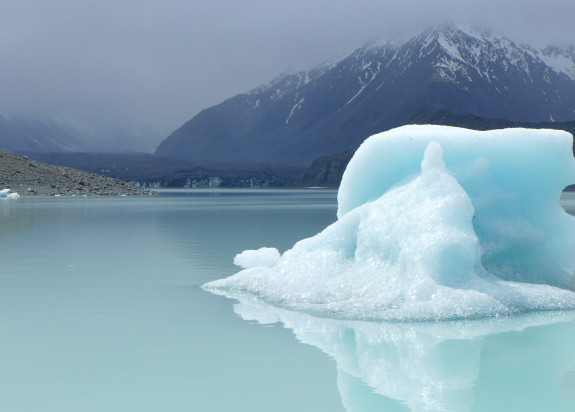
-
Glaciers and climate
When the climate conditions remain constant a glacier will be in a state of balance or equilibrium, with the accumulation of new snow and ice being exactly compensated by the downward flow and ablation over a period of a year. In these conditions a glacier will stay the same size and shape, with the terminus remaining stationary and a large terminal moraine can form.
However, when the general climate fluctuates, causing variations in local climate (such as average temperature, cloud cover, wind direction, precipitation etc), the mass balance is pushed out of equilibrium. The mass of snow and ice being added to the upper glacier is no longer the same as the mass being lost by ablation lower down. Mass balance is said to be positive when there is a net gain of ice mass and negative when there is a net loss.
A glacier is responding primarily to the local climate conditions, which vary from place to place. However there are other factors that can make glaciers behave differently. For example, some glaciers are more responsive to short term variations in the climate and may advance and retreat whilst nearby less responsive glaciers don’t appear to change much at all. This can be caused by a combination of the size, shape, speed and steepness of the glacier, the rate of accumulation and the amount of rock debris covering the surface.
The time it takes for a glacier to adjust to a climate shift is known as the response time. This typically varies from a few years to many decades, depending on the glacier size, steepness, flow rates, and other factors. As glaciers retreat, they can act like giant bulldozers that carve away at the mountainside and carry away the eroded rocks like a conveyor belt. Since the presence and size of glaciers is related to the climatic conditions, the landscape features can tell the story of past climates.
-
Will we lose our glaciers to climate change?
There is a positive feedback relationship between a glacier’s ice thickness and the local climate. The thicker the ice, the higher and therefore the colder the surface is. This means that some small low angle glaciers are self sustaining and survive because of their own cooling effect. This works because their surface is above the equilibrium line altitude and in the accumulation zone, even though their base is below it. Once they disappear, these glaciers won’t reform again unless the climate gets substantially colder.
